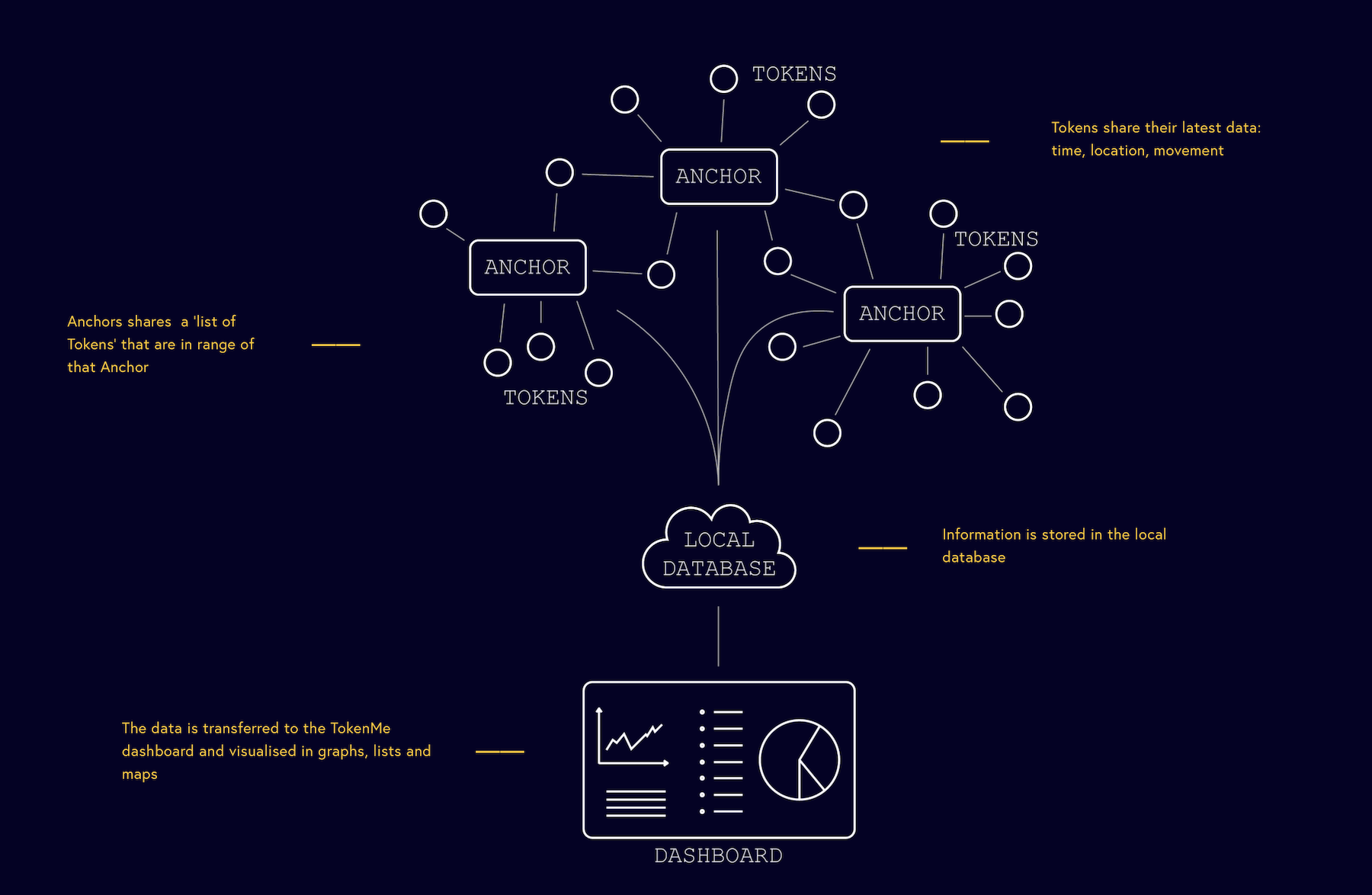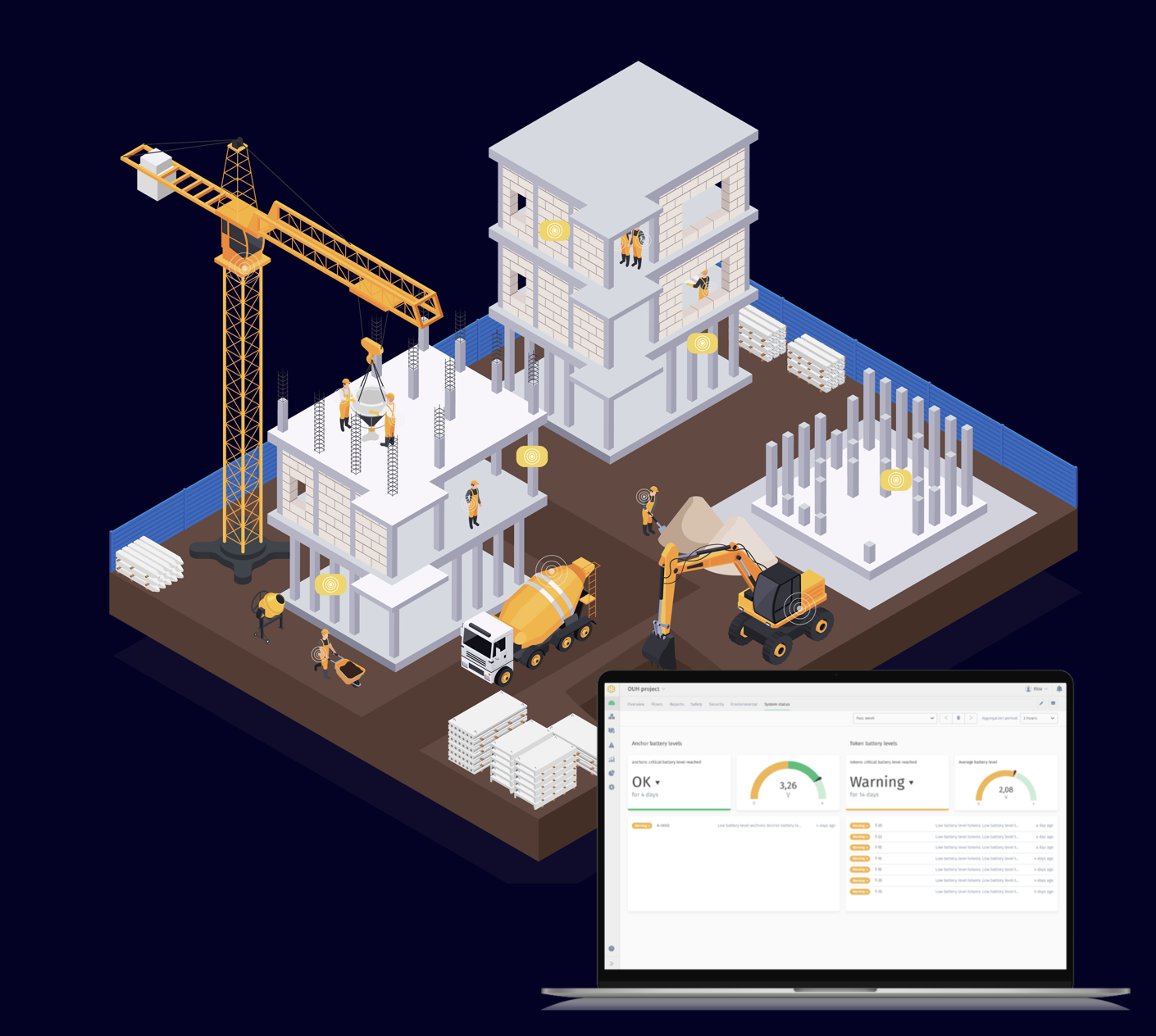Hard hats with tracking sensors. Smart boots and watches. Glasses that open windows to augmented reality. Exoskeletons that relieve user stress. These are among the wearable technologies that have emerged in recent years to make construction sites safer and more efficient for workers and supervisors.
Earlier this month, TokenMe, a Dutch-based firm, received the Innovation Award for wearable technology at the Consumer Electronics Show in Las Vegas. The firm’s product offers construction managers a real-time crowd- and asset-tracking solution via low-power, location-aware radio and RFID (radio-frequency identification) tags and multiple sensors through which data are processed with cloud-based artificial intelligence.
TokenMe’s technology includes ultra-wide band for presence and time-stamp communication, the Low Power Wide Area Networking (LoRaWAN) protocol for easy installation of battery powered receivers, called anchors, WiFi and PoE for installation in existing infrastructures, Near-Field Communication (NFC) protocols for wireless and secure identifications, environmental sensors and RFID ID stickers, and wireless charging using Qi chargers.

Body sensors transmit construction project data
The technology works like this: jobsite workers or visitors wear smart badges or helmet tags called tokens, which send data about the wearers' time, location, and movement to anchors that are mounted strategically around the site.
The 45x45x12-millimeter tags have a range up to 50 meters and an operational battery life of 500 days. They come equipped with Bluetooth and UWB tracking sensors, a 6-axis motion sensor, and a temperature sensor. The 150x66x42-mm anchors each has a coverage range of 500 sm; wireless connectivity with UWB, BLE, WiFi-Mesh, and LoRaWAN; and is equipped with sensors for temperature, humidity, air quality, and motion detection.
The anchors send this jobsite information to a proprietary cloud database that processes the data through an AI engine to provide project managers and other interested parties with a dashboard that shows graphs, visuals, and observations about task completions. Movement and interaction triggers can be preprogrammed as warnings and alarms.
The dashboard information can also help guide supervisors’ and contractors’ future plans.
As a communications tool, TokenMe’s presences and access monitoring data can be integrated into classical systems to deliver flexible application programming interfaces and triggers to generate meaningful and representative data, according to the firm. Its technology has a UWB frequency range of between 3.1 and 10.6 GHz, and a transmission range of between 32.8 and 656.2 ft, depending on the application. Its localized accuracy falls between 0.33 and 1.64 ft, and has low susceptibility to interference.
Related Stories
Design Innovation Report | Apr 19, 2023
HDR uses artificial intelligence tools to help design a vital health clinic in India
Architects from HDR worked pro bono with iKure, a technology-centric healthcare provider, to build a healthcare clinic in rural India.
Resiliency | Apr 18, 2023
AI-simulated hurricanes could aid in designing more resilient buildings
Researchers at the National Institute of Standards and Technology (NIST) have devised a new method of digitally simulating hurricanes in an effort to create more resilient buildings. A recent study asserts that the simulations can accurately represent the trajectory and wind speeds of a collection of actual storms.
AEC Tech | Mar 14, 2023
Skanska tests robots to keep construction sites clean
What if we could increase consistency and efficiency with housekeeping by automating this process with a robot? Introducing: Spot.
AEC Innovators | Feb 28, 2023
Meet the 'urban miner' who is rethinking how we deconstruct and reuse buildings
New Horizon Urban Mining, a demolition firm in the Netherlands, has hitched its business model to construction materials recycling. It's plan: deconstruct buildings and infrastructure and sell the building products for reuse in new construction. New Horizon and its Founder Michel Baars have been named 2023 AEC Innovators by Building Design+Construction editors.
Multifamily Housing | Feb 3, 2023
HUD unveils report to help multifamily housing developers overcome barriers to offsite construction
The U.S. Department of Housing and Urban Development, in partnership with the National Institute of Building Sciences and MOD X, has released the Offsite Construction for Housing: Research Roadmap, a strategic report that presents the key knowledge gaps and research needs to overcome the barriers and challenges to offsite construction.
AEC Tech | Jan 27, 2023
Key takeaways from Autodesk University 2022
Autodesk laid out its long-term vision to drive digital collaboration through cloud-based solutions and emphasized the importance of connecting people, processes and data.
AEC Tech Innovation | Jan 24, 2023
ConTech investment weathered last year’s shaky economy
Investment in construction technology (ConTech) hit $5.38 billion last year (less than a 1% falloff compared to 2021) from 228 deals, according to CEMEX Ventures’ estimates. The firm announced its top 50 construction technology startups of 2023.
Virtual Reality | Dec 12, 2022
Supplementing workplace connections through digital knowledge networks
Zachary Wassenberg of Burns & McDonnell breaks down three applications for digital knowledge networks: training, libraries, and instructions.
Digital Twin | Nov 21, 2022
An inside look at the airport industry's plan to develop a digital twin guidebook
Zoë Fisher, AIA explores how design strategies are changing the way we deliver and design projects in the post-pandemic world.
Giants 400 | Nov 14, 2022
4 emerging trends from BD+C's 2022 Giants 400 Report
Regenerative design, cognitive health, and jobsite robotics highlight the top trends from the 519 design and construction firms that participated in BD+C's 2022 Giants 400 Report.

















